
USA & Canada Accelerator Report 2016
#USACanadaAcceleratorReport
Introduction
Over the last few years, accelerators and the programs they operate have become key players
within startup ecosystems, helping thousands of founders build and grow innovative businesses
in today's "new economy." Accelerators have become far more than simple business-service
providers or investment vehicles, instead emerging as invaluable operators within public and
private spheres. They bring together entrepreneurs, investors, public entities, and
corporations with the common goal of helping innovative businesses quickly take root.
Policymakers and other actors in the startup community should understand the essential role of
accelerators within the startup ecosystem, as proper incentivization of accelerators has the potential to
effectively facilitate the cultivation and cross-pollination of startups.
The USA & Canada Accelerator Report 2016 provides an exclusive inside look
at accelerator programs in the region.
This report is a follow-up on the
2015 Accelerator Report
and aims to explain how the accelerator industry is evolving in the region,
how accelerators support their activities, and how they impact local and regional
tech startup ecosystems.
Please note that many organizations supporting entrepreneurship, such as incubators and
venture builders, have not been included in the scope of this report, even if they share
some common traits with accelerators.
Accelerator — an evolving definition:
The acceleration industry is evolving rapidly, and it is becoming increasingly
difficult to precisely define what an accelerator is. As new models emerge,
the term "accelerator" describes an increasingly diverse set of programs and organizations, and,
often, the lines that distinguish accelerators from similar institutions, like incubators and
early-stage funds, become blurred. For the purposes of this report, accelerators can be
defined according to Miller and Bound (2011), and share these common traits:
1) An application process that is open to all, yet highly competitive.
2) Possible provision of pre-seed investment (grant or equity).
3) A focus on small teams instead of individual founders.
4) Time-limited support comprising programmed events and intensive mentoring.
5) Cohorts or ‘classes’ of startups rather than individual companies.
Total investment in the region
US$107,264,392
in 3,269 startups
by 178 accelerator programs
-

California
-
US$47,128,774 invested in 863 startups from 31 accelerators
-
Most cash invested:
500 Startups
Most startups accelerated:
500 Startups
-

Massachusetts
-
US$5,974,816 invested in 575 startups from 7 accelerators
-
Most cash invested:
MassChallenge
Most startups accelerated:
MassChallenge
-

New York
-
US$17,822,900 invested in 310 startups from 27 accelerators
-
Most cash invested:
Entrepreneurs Roundtable Accelerator
Most startups accelerated:
CUNY Startups Accelerator
-

Hawaii
-
US$6,800,000 invested in 41 startups from 3 accelerators
-
Most cash invested:
Elemental Excelerator
Most startups accelerated:
Elemental Excelerator
-

Texas
-
US$3,495,000 invested in 372 startups from 9 accelerators
-
Most cash invested:
Capital Factory
Most startups accelerated:
Tech Ranch Austin
-

Missouri
-
US$3,400,000 invested in 44 startups from 5 accelerators
-
Most cash invested:
Techstars Sprint 2016
Most startups accelerated:
Techstars Sprint 2016
-

Colorado
-
US$2,669,981 invested in 95 startups from 7 accelerators
-
Most cash invested:
Techstars Boulder 2016 Spring
Most startups accelerated:
Canopy Accelerator
-

Georgia
-
US$2,451,712 invested in 62 startups from 6 accelerators
-
Most cash invested:
Techstars Atlanta 2016 Summer
Most startups accelerated:
Points of Light Civic Accelerator
-

Oregon
-
US$2,096,500 invested in 188 startups from 7 accelerators
-
Most cash invested:
Oregon BEST
Most startups accelerated:
OSU Advantage Accelerator
-

Washington
-
US$1,700,000 invested in 47 startups from 5 accelerators
-
Most cash invested:
Techstars Seattle 2016 Spring
Most startups accelerated:
MSV Seattle Accelerator
-

Tennessee
-
US$1,530,000 invested in 33 startups from 3 accelerators
-
Most cash invested:
Start Co.
Most startups accelerated:
Start Co.
-

Wisconsin
-
US$1,337,000 invested in 32 startups from 3 accelerators
-
Most cash invested:
Gener8tor
Most startups accelerated:
University of Wisconsin-Whitewater Launch Pad
-

Illinois
-
US$1,320,000 invested in 52 startups from 4 accelerators
-
Most cash invested:
Techstars Chicago 2016 Summer
Most startups accelerated:
Sente.link
-

Minnesota
-
US$1,200,000 invested in 10 startups from 1 accelerator
-
Most cash invested:
Techstars Retail 2016 Summer
Most startups accelerated:
Techstars Retail 2016 Summer
-

Ohio
-
US$1,200,000 invested in 15 startups from 2 accelerators
-
Most cash invested:
Flashstarts,Inc
Most startups accelerated:
The Brandery
-

Michigan
-
US$1,069,070 invested in 48 startups from 2 accelerators
-
Most cash invested:
Techstars Mobility 2016 Summer
Most startups accelerated:
TechTown Detroit
-

Virginia
-
US$805,000 invested in 41 startups from 3 accelerators
-
Most cash invested:
MACH37 Cyber Accelerator
Most startups accelerated:
I.Lab
-

North Carolina
-
US$715,150 invested in 57 startups from 6 accelerators
-
Most cash invested:
Vibe Ventures
Most startups accelerated:
Vibe Ventures
-

Kentucky
-
US$500,000 invested in 31 startups from 3 accelerators
-
Most cash invested:
UpTech
Most startups accelerated:
UpTech
-

Washington DC
-
US$500,000 invested in 60 startups from 1 accelerator
-
Most cash invested:
Village Capital
Most startups accelerated:
Village Capital
-

Pennsylvania
-
US$450,000 invested in 76 startups from 4 accelerators
-
Most cash invested:
Idea Foundry, Inc.
Most startups accelerated:
Dreamit
-

New Mexico
-
US$425,000 invested in 22 startups from 2 accelerators
-
Most cash invested:
ABQid
Most startups accelerated:
ABQid
-

Quebec
-
US$370,380 invested in 57 startups from 5 accelerators
-
Most cash invested:
Hacking Health Accelerator
Most startups accelerated:
Le CAMP Québec
-

Arizona
-
US$335,000 invested in 116 startups from 3 accelerators
-
Most cash invested:
BioAccel
Most startups accelerated:
SEED SPOT
-

Ontario
-
US$1,332,940 invested in 46 startups from 6 accelerators
-
Most cash invested:
500 Startups
Most startups accelerated:
L-SPARK
-

Nevada
-
US$275,000 invested in 15 startups from 1 accelerator
-
Most cash invested:
The Mill
Most startups accelerated:
The Mill
-

Maryland
-
US$250,000 invested in 11 startups from 2 accelerators
-
Most cash invested:
Accelerate Baltimore
Most startups accelerated:
Accelerate Baltimore
-

Iowa
-
US$240,000 invested in 6 startups from 1 accelerator
-
Most cash invested:
Global Insurance Accelerator
Most startups accelerated:
Global Insurance Accelerator
-

Utah
-
US$180,000 invested in 9 startups from 2 accelerators
-
Most cash invested:
BoomStartup
Most startups accelerated:
BoomStartup
-

Connecticut
-
US$175,000 invested in 5 startups from 2 accelerators
-
Most cash invested:
The Refinery
Most startups accelerated:
The Refinery
-

Florida
-
US$1,571,000 invested in 31 startups from 4 accelerators
-
Most cash invested:
500 Startups
Most startups accelerated:
Startupbootcamp Digital Health
-

Alaska
-
US$125,000 invested in 5 startups from 1 accelerator
-
Most cash invested:
Launch : Alaska
Most startups accelerated:
Launch : Alaska
-

Nebraska
-
US$120,000 invested in 6 startups from 1 accelerator
-
Most cash invested:
NMotion
Most startups accelerated:
NMotion
-

New Brunswick
-
US$17,000 invested in 71 startups from 2 accelerators
-
Most cash invested:
The Summer Institute
Most startups accelerated:
Propel ICT Inc.
-

Alberta
-
US$0 invested in 9 startups from 2 accelerators
-
Most cash invested:
-
Most startups accelerated:
Clean Energy Technology Centre
-

British Columbia
-
US$0 invested in 133 startups from 2 accelerators
-
Most cash invested:
-
Most startups accelerated:
Wavefront
-

Louisiana
-
US$0 invested in 33 startups from 2 accelerators
-
Most cash invested:
-
Most startups accelerated:
IDEAx
-

Nova Scotia
-
US$0 invested in 18 startups from 2 accelerators
-
Most cash invested:
-
Most startups accelerated:
Wavefront

-
Top 10 states/provinces by investment
-

California
US$47,128,774
-

New York
US$17,822,900
-

Hawaii
US$6,800,000
-

Massachusetts
US$5,974,816
-

Texas
US$3,495,000
-

Missouri
US$3,400,000
-

Colorado
US$2,669,981
-

Georgia
US$2,451,712
-

Oregon
US$2,096,500
-

Washington
US$1,700,000
-
-
Top 10 states/provinces by startups accelerated
-

California
863
-

Massachusetts
575
-

Texas
372
-

New York
310
-

Oregon
188
-

British Columbia
133
-

Arizona
116
-

Colorado
95
-

Pennsylvania
76
-

New Brunswick
71
-
82 Exits reported by 5 accelerators in 2016

TOP 10 SEED ACCELERATORS
By capital invested
-

500 Startups
US$27,075,000
United States | Private fund
-
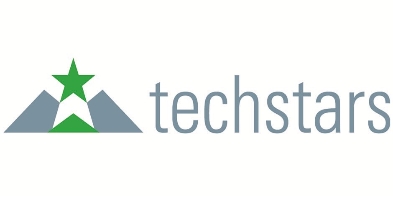
Techstars USA
US$19,560,000
United States | Private fund
-
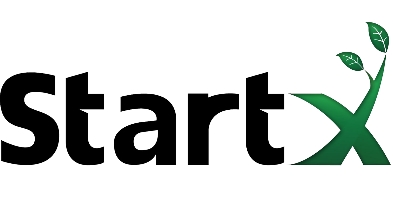
StartX
US$11,033,774
United States | Private fund
-
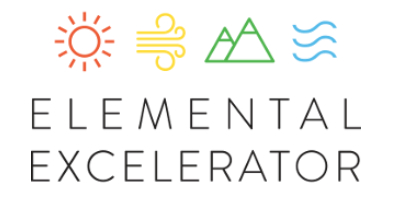
Elemental Excelerator
US$6,000,000
United States | Private fund
-
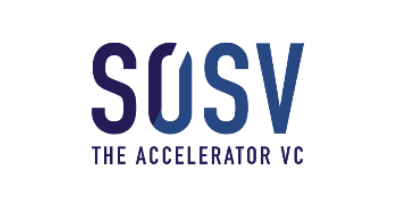
SOSV
US$4,209,400
United States | Private fund
-
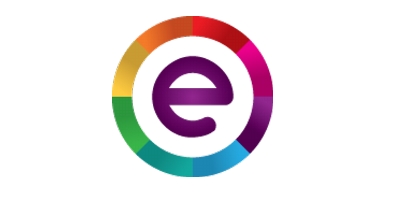
Entrepreneurs Roundtable Accelerator
US$4,100,000
United States | Private fund
-
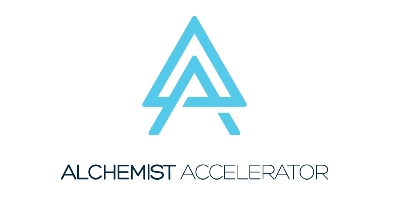
Alchemist Accelerator
US$2,000,000
United States | Private fund
-

R/GA Accelerator
US$2,000,000
United States | Private fund
-
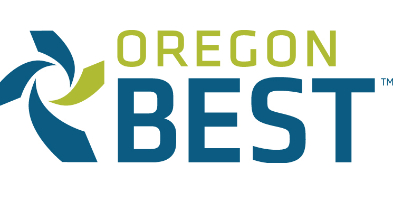
Oregon BEST
US$1,546,500
United States | Mixed fund
-

Capital Factory
US$1,500,000
United States | Private fund
Top seed accelerators ranked by cash amount invested into startups (excludes provided services, mentorship, coworking space, or follow-up investment).
This ranking is not a measure of the success or quality of these programs.
TYPE OF ORGANIZATION
Are you a for-profit organization?
- For-profit
- Not-for-profit
59.8% of accelerators in the region claim to be for-profit ventures, slightly below what was reported in the 2015 edition (64.8%). Typically, for-profit accelerators are funded with private capital from investors aiming to generate long-term profit. This is primarily accomplished by the appreciation of their equity in startups, but also by providing business-support services and by offering “acceleration-as-a-service” to large corporations.
Not-for-profit accelerators support industries that provide a specific public benefit, such as Healthtech and Edtech. Others aim to boost entrepreneurship in their communities. They may also focus on providing new opportunities for minority groups or look to boost economic activity in a given region. These programs and the organizations operating them may be either privately or publicly funded. Generally, these programs do not take equity and instead offer free support.
Examples of not-for-profit accelerators include MassChallenge, AlphaLab, Le CAMP Québec, and MACH37 Cyber Accelerator.
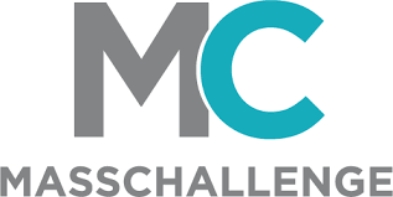
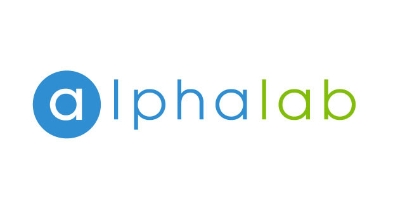


SOURCES OF ACCELERATOR FUNDING
How are you funded?
- Private funding only
- Mix of both (Public/Private)
- Public funding only
-
51.7% of accelerators in both the United States and Canada are completely funded by private capital. Investors include high net worth individuals, angel groups, private investors (i.e. venture capital investment funds), and/or corporations. They seek to profit through positive startup exits (acquisitions, IPOs, etc.) and by having early access to high-potential tech companies. 39.1% of accelerator programs operating in the region have received a mix of public and private funding, showing high levels of cooperation between public and private organizations.
THE ACCELERATOR BUSINESS MODEL
What was your main source of revenue in 2016?
-
No revenue
31%
-
Corporate sponsorship
30%
-
Corporate partnerships (operating acceleration program w/corporation)
17%
-
Other
6%
-
Charge for mentorship
5%
-
Charge for office space
5%
-
Events
4%
-
Exit of startups
2%
How will you generate revenue in the medium & long terms?
-
Corporate partnerships (operating acceleration program w/corporation)
59%
-
Corporate sponsorship
37%
-
Exit of startups
35%
-
Other
24%
-
Events
16%
-
Charge for office space
12%
-
Charge for mentorship
8%
In the 2015 Report, 65.7% of accelerators
indicated that they intended to follow the traditional "cash-for-equity"
model, first established in 2005 by Y Combinator, which involves investing
a small amount of seed money in a startup — around $25,000 on average
— in exchange for equity (usually between 5% and 10%). Increasingly, this model is
becoming rare as accelerators reconsider their general outlook.
Most likely, the small number of exits — 49 reported in 2016
— has proven insufficient in funding their operations.
Only 2% of accelerators operating in the region reported exits as a
main source of revenue in 2016. 66.1% of accelerators
take equity in startups, and 35% predict generating
revenue from exits in the future.
Accelerators have historically relied on, and continue to explore,
alternative models of revenue generation. 87% of accelerators
in the USA and Canada plan to increase their revenue in the medium-
to long-term by incorporating such models, including, but not limited to,
charging for mentorship, subletting office space, hosting events, and
working with corporations.
As we predicted last year, the relationships between accelerators and
corporations have grown stronger and more numerous.
52.3% of accelerators are at least partially funded by a corporation,
and 66.7% aim to generate future revenue from services sold to corporations.
Corporate revenue generated by accelerators came from two main sources in 2016:
17% was a result of corporate partnerships, generally in the form of a white-labeled
or jointly-run acceleration program created by the accelerator on behalf of the corporation.
30% came from corporate sponsorship packages sold by accelerators.
AMERICAN & CANADIAN ACCELERATOR EQUITY AND INVESTMENT MODEL
Do you invest cash?
- Cash investment
- No investment
Accelerators that do not invest cash generally focus on providing services and resources such as workshops, mentorship, coworking space, and connections.
Do you take equity from participating companies?
- Yes
- No
What range?
-
Equity free
34%
-
Between 1% and 3%
9%
-
Between 4% and 6%
37%
-
Between 7% and 10%
9%
-
Over 10%
1%
-
Undisclosed
10%
MAIN TRENDS
In 2016, the acceleration model has continued to grow and evolve. Four major trends can be identified.
Trend 1: Growing ties between accelerators & corporations
Corporate funding
- Corporate funding
- Non-corporate funding
“Corporations are increasingly engaging in a more meaningful way with startup founders and the broader entrepreneurial ecosystem,” said Bobby Franklin, President and CEO of NVCA. The number of venture capital firms (VCs) has grown by 15.5% each year between 2011 and 2015, according to data from CB Insights. This growth in corporate engagement in the startup ecosystem is beginning to spill over into the accelerator industry.
Corporate revenue in 2017
- Corporate revenue
- Non-corporate revenue
As the accelerator industry matures, we are seeing increased collaboration between accelerators and corporations. “On the one hand, this is because corporations are discovering that accelerators are an efficient and effective way to engage with startups. On the other hand, accelerators understand that corporations can help them fund operations in the short-to-medium term (exits are often far out). They improve the prospects of their portfolio companies that can potentially sell to, raise funds from, or be acquired by these corporations," said Miklos Grof, co-author of this report.
There is a growing trend for corporations to outsource their acceleration programs due to their limited skills in accelerating startups. Some voices in the startup ecosystem, notably high-profile venture capitalist Fred Wilson, welcome this development. He believes, “Corporations should BUY companies. Investing in companies makes no sense,” as cited by CB Insights.
Corporations can benefit from accelerators in 5 different ways:
- Launching a program quickly and cost-effectively: by partnering with accelerators, corporations can quickly enter the acceleration business and adopt best practices developed by accelerators over years of operation.
- Enhancing deal flow: by accessing the accelerator’s immense marketing power and network.
- Staying up to date: by having access to an accelerator’s deal flow, they receive insight into the innovation pipeline in their market. Corporations have learned that competitors now often come from the startup world.
- Building an innovative corporate culture: by placing their corporate executives as mentors in the accelerator or by enabling their own corporate executives to innovate. In the latter case, the new product could be placed into a separate company that is then accelerated by the accelerator.
- Building a more innovative brand: by aligning with accelerators and their startups which have become symbols of innovation in the eyes of the public.
Examples of accelerators that are aligning themselves with corporations include: Acceleprise, Techstars, FounderFuel, and R/GA Ventures.




Trend 2: Verticalization
Are your program(s) focused on specific verticals?
- Yes
- No
Accelerator verticalization is driven in part by the following:
- Establishing core competence: accelerators have realized that it is hard to attract and choose high potential startups when they are 'jack-of-all-trades'.
- Responding to corporate clients: the expertise of a corporate sponsor or partner is confined to the industry in which it operates.
- Brand building: in order to offer more "concentrated" value to startups and attract the best founders, accelerators need to position themselves in their ecosystems and attract more experienced mentors and investors.
Continuing the trend identified in the 2015 report, the acceleration landscape in the region is increasingly moving towards verticalization, with 62% of accelerators running programs focused on a particular industry or sector niche. This trend is likely to continue as regional startup ecosystems continue to mature. This is a very positive development because verticalized accelerators generally bring more value to startups through more qualified acceleration teams, larger pools of quality mentors within the industry, and close corporate ties to related markets.
Some examples of accelerators operating vertical programs in the region include: Startupbootcamp Fintech, Elemental Excelerator, Urban-X, and Starburst.


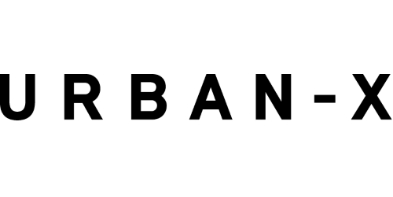

Trend 3: Expansion
Do you plan to expand to new locations in 2017?
After reaching a certain level of maturity, expansion becomes a natural next step for well-established accelerators. This growth comes in three forms: by opening new vertical programs, by launching new programs in different cities, or by launching programs internationally. Some examples include MassChallenge, Microsoft Accelerator, Techstars, and Fledge — four US accelerators that also operate programs abroad.
According to Sebastien Brunet, co-author of this report, “There are different reasons for which an accelerator decides to go abroad: to help their startup portfolios expand to new markets by providing softlanding services, to source innovative startups from new regions, to increase the quality of their deal flow and to reinforce their brands on an international level.”
International expansion usually happens in two ways:
- By merging or acquiring an already existing accelerator in a new country.
- By partnering with a local player, for example a VC fund.
Trend 4: Blurring lines
Traditionally, the norm for an accelerator was to accelerate 10-30 startups per year by investing $20,000-$50,000 in each business.
Today, accelerators often operate across the investment life cycle in an attempt to fill the gaps in local startup ecosystems and cater to potential financial partners and sponsors. These include governments, universities, and corporations. New operating models have evolved immensly, thereby blurring the lines between accelerators, incubators, and early-stage funds. Of the 178 accelerator programs included in this report, 39% described themselves as a combined accelerator, incubator, venture capital fund, and/or angel group.
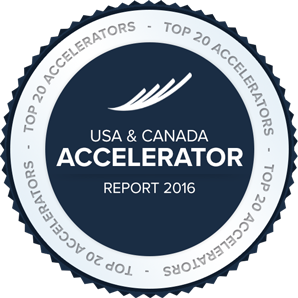
TOP 20 ACTIVE ACCELERATORS
By number of startups accelerated in 2016
-
-
Country
-
Accelerator
-
State
-
Startups accelerated in 2016
-
-
-

-
500 Startups
-
California
-
206
-
-
-

-
Techstars
-
Whole country
-
163
-
-
-

-
Tech Ranch Austin
-
Texas
-
130
-
-
-

-
MassChallenge
-
Massachusetts
-
128
-
-
-

-
Startup Aggieland
-
Texas
-
120
-
-
-

-
SEED SPOT
-
Arizona
-
107
-
-
-

-
StartX
-
California
-
97
-
-
-

-
OSU Advantage Accelerator
-
Oregon
-
94
-
-
-

-
US Market Access Center
-
California
-
90
-
-
-

-
SOSV
-
Whole country
-
85
-
-
-

-
Capital Factory
-
Texas
-
65
-
-
-

-
Propel ICT
-
New Brunswick
-
64
-
-
-

-
Village Capital
-
Washington DC
-
60
-
-
-

-
Alchemist Accelerator
-
California
-
52
-
-
-

-
German Accelerator
-
New York
-
48
-
-
-

-
Starburst
-
California, Quebec
-
45
-
-
-

-
OCTANe
-
California
-
43
-
-
-

-
Dreamit
-
Pennsylvania
-
42
-
-
-

-
Accelerate Tectoria
-
British Columbia
-
41
-
-
-

-
Boost VC
-
California
-
40
-
This ranking is not a measure of the success or quality of these programs.
HOT MARKETS
in the region in 2016
% of accelerators that reported an interest in investing in these markets in the next 12 months
-

Health
53.45%
-

Saas
52.87%
-

Internet of things
51.15%
-

Fintech
45.98%
-
Big data analytics
43.10%%
-
Mobile apps
40.80%
-
Education
36.78%
-
E-commerce
33.91%
-
Agritech
31.61%
-
Wearables
31.61%
-
Cloud services
30.46%
-
Biotech
28.74%
-
Cleantech
27.01%
-
Others
26.44%
-
Drones
22.41%
-
Education
21.84%
-
Social media analytics
21.26%
-
Real estate
17.82%
THE LOCAL INSIGHT
How do you see the accelerator model evolving in the USA and Canada in the next couple of years?
-


-
Suzanne Rombeau Fletcher
Stanford-StartX Fund Manager (United States)
Silicon Valley is seeing a shift where for-profit accelerators are focusing increasingly on quantity. Whereas the non-profit entrepreneurship communities are trending towards quality. Founders are becoming increasingly aware that a long-term community to support them through exit is orders of magnitude more valuable than a 10 week curriculum. This is evidenced by surprising participation from more accomplished demographics, including tenured professors, serial entrepreneurs and growth stage startups in such programs.
-


-
Ravi Belani
Alchemist Accelerator (United States)
I think we will see a lot more sophistication in how corporates think about innovation in North America. And I think accelerators will play a more core role in smoothing the traditional “impedance mismatch” between corporates and startups – allowing corporates to expose resources to help startup founders, and allowing startups to shape the innovation strategy of corporates. Today, many corporate-backed accelerator programs are just in an experimental phase. And I think you will see in the next few years these programs mature in sophistication, and deepen in impact.
-


THE REPORT
-
468
Institutions contacted
102% more than 2015
-
186
Replies
39% more than 2015
-
148
Accelerators
34% more than 2015
-
2
States/Provinces
0 more than 2015
Accelerator programs by country
-

United States
159
-

Canada
19
